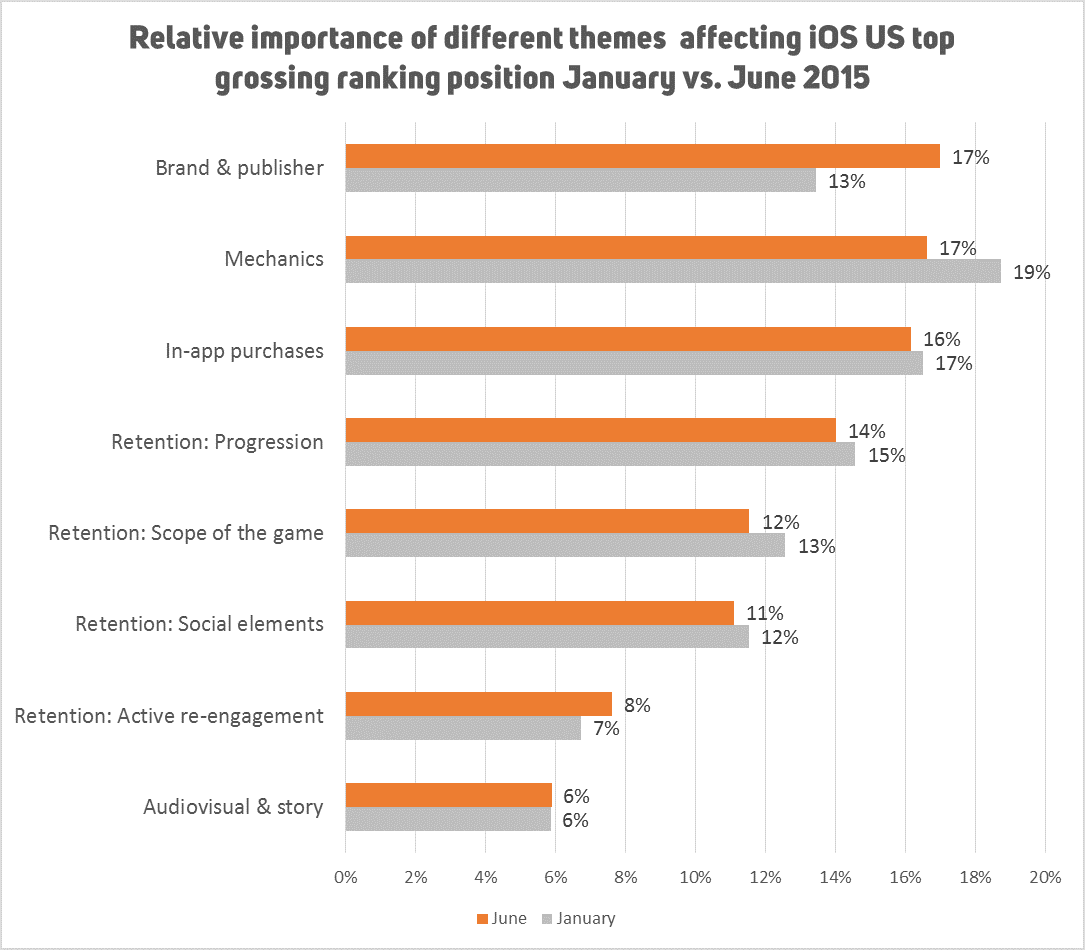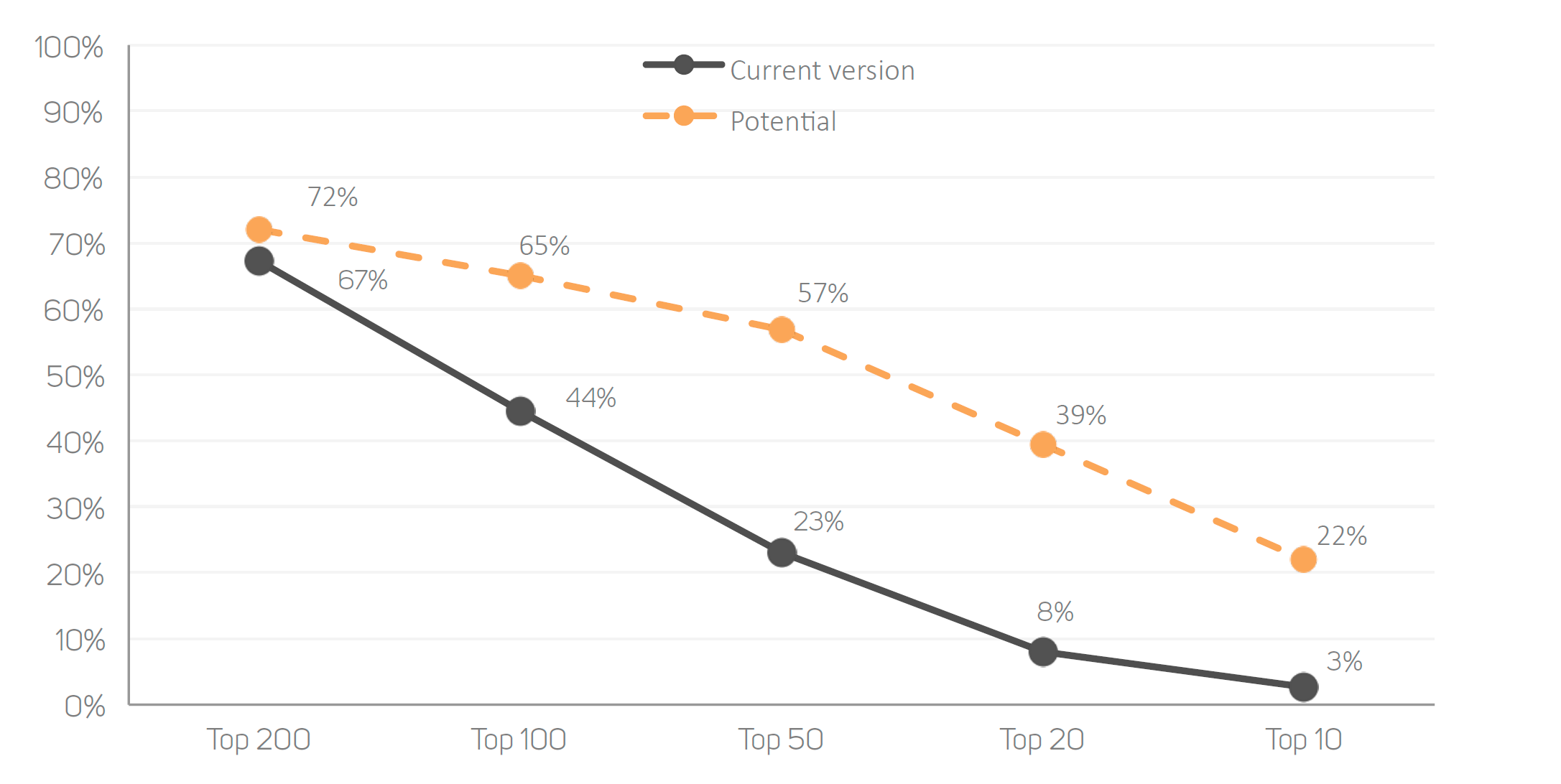The mobile game industry is changing fast – really fast. What made a hit game two years ago is not going to take you very far today in the era of free-to-play domination. Also, the competition is now fiercer than ever: there are over 300.000 different games in the App Store and the growth rate is even accelerating. This means that if you want to be a successful game developer (or investor or publisher), you need to spend a more and more time to be ahead of your competitors understanding what makes a successful game not only now, but also in the future.
To help you in this task, we wanted to create this blog series to provide you facts that
- helps you to understand why some games are more successful than the others
- help you to make better game development decisions now and in the future
In this first part, we are focusing on bigger trends and what type of higher level game design elements drive success in general (for example how important is the brand / IP vs. social elements).
we wanted to create this blog series to provide you facts to help you to make better game development decisions now and in the future
Methodology
All the facts are based on our big database of games and their features during different time periods. All games in our database are analyzed by extracting over 150 different game features from them resulting in over 225.000 pieces of information. In this first part of GameRefinery’s Fact Snippets, the data is analyzed by using statistical modeling methods to find how different individual features explain the position at the iOS US top grossing.
What drives success in mobile games?
It is literally a million dollar question that unfortunately doesn’t have one direct answer. Each of the game is a unique combination of different features – some of them are more important than the others depending on the game type and category. However, there are some generalizations that can be made based on statistical facts.
There are some generalizations that can be made based on statistical facts.
These are presented in the graph below:

The key findings from the analysis:
There is no one single factor that defines the success alone. For example, a game that is based on a well-known brand (for example Simpsons, Marvel etc.) doesn’t guarantee success if game mechanics is poorly implemented or the game is lacking well-built progression elements. You need to be taken into account if you want to be a truly successful.
- The Top 3 factors that are the most important in driving success at the moment are Brand & Publisher (for example is it based on a well-known brand, who is the publisher/developer), game mechanics (how the game is played) and how the monetization mechanics/in-app purchases are built (what you can buy and how).
- The least important (but still important if you want to make a truly successful game) one is Audiovisual & Story (the visual genre, is it a true 3d game or not, how smooth the animation is, what narrative elements the game has etc.). The result is not surprising: if you want to make a successful mobile game that is played not only days or weeks but months and years, graphics alone won’t get you there – this is totally different compared to triple A console or PC games where graphics plays a much bigger role.
- The importance of brands is increasing, and it is probable that the trend will continue. When the competition gets tighter and there are more and more possibilities for people to choose from, the importance of brands increases. In more mature markets, the contribution of a brand is already much higher. For example, Coca Cola’s brand value is about 80 billion which is 44% of the total value of the whole company. Licensing IP is one way to utilize the effect of a strong brand. The other way is to start building your own game brand (Candy Crush, Angry Birds etc.) – it takes longer but is less expensive and gives better control how to use the brand in your future games. The other way to utilize the positive brand effect is to build a strong company brand. Supercell is probably the best example from mobile game industry: they have globally launched only three games, but all of them are high quality and very successful. The next time they publish a new game it will get huge uplift just by being a “Supercell-game” – in a same way when Apple launches a new iPhone.
This was the first part of the blog series of GameRefinery Fact Snippets. In the later parts we dig deeper into individual features and their importance and trends (for example, is the ability to see your friends’ high scores still important?) – stay tuned!
Blog posts you may also like:





















